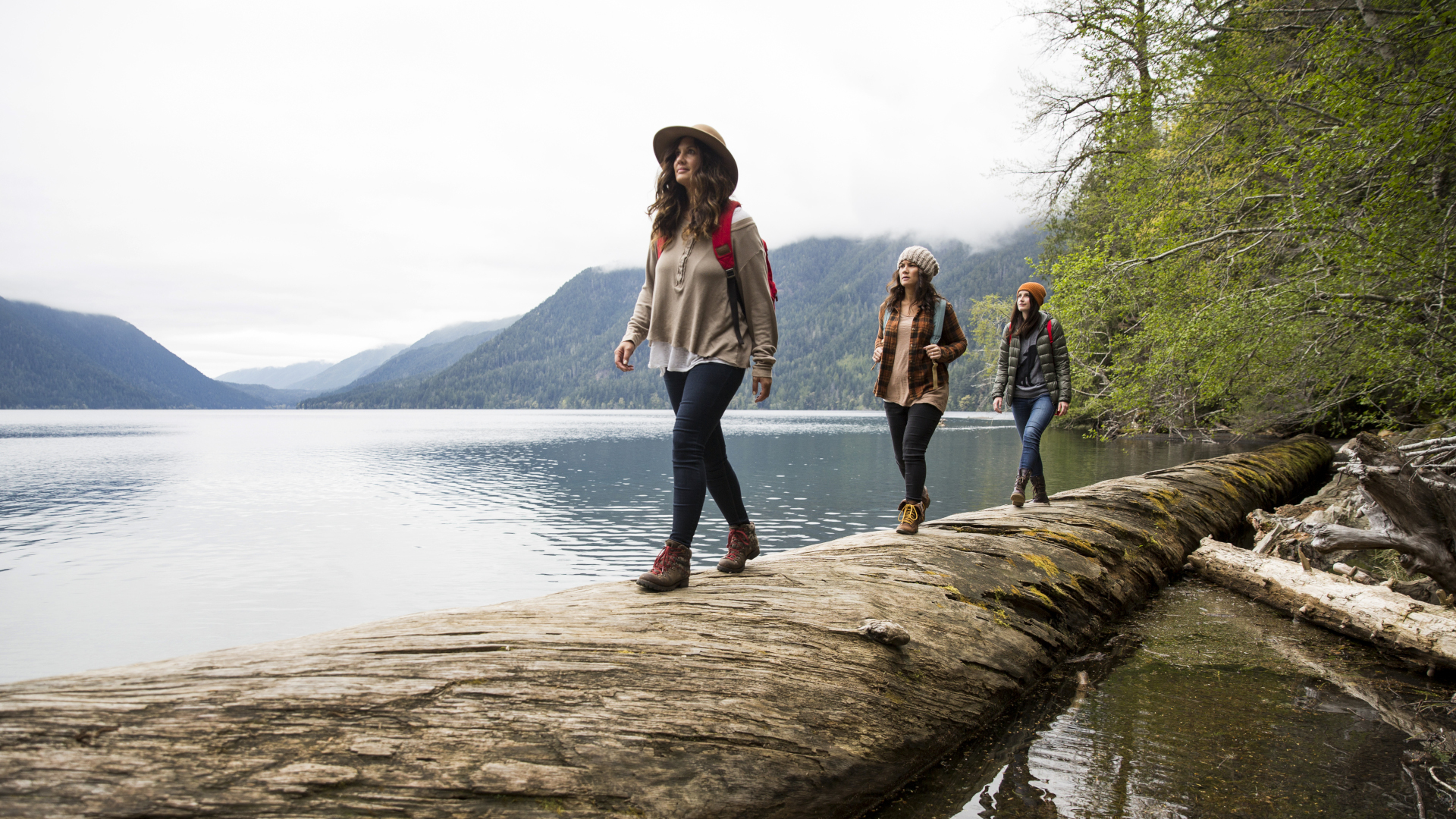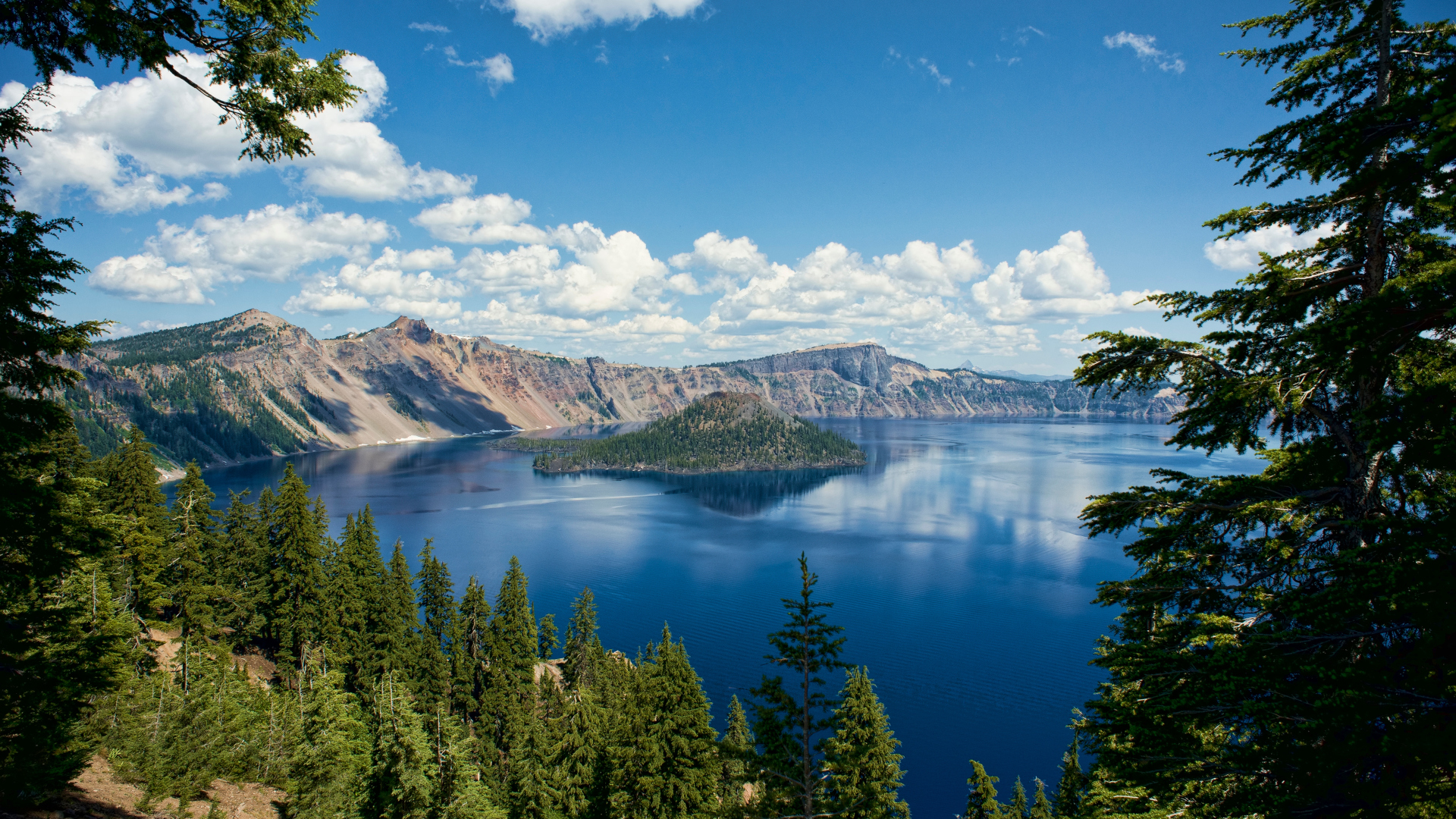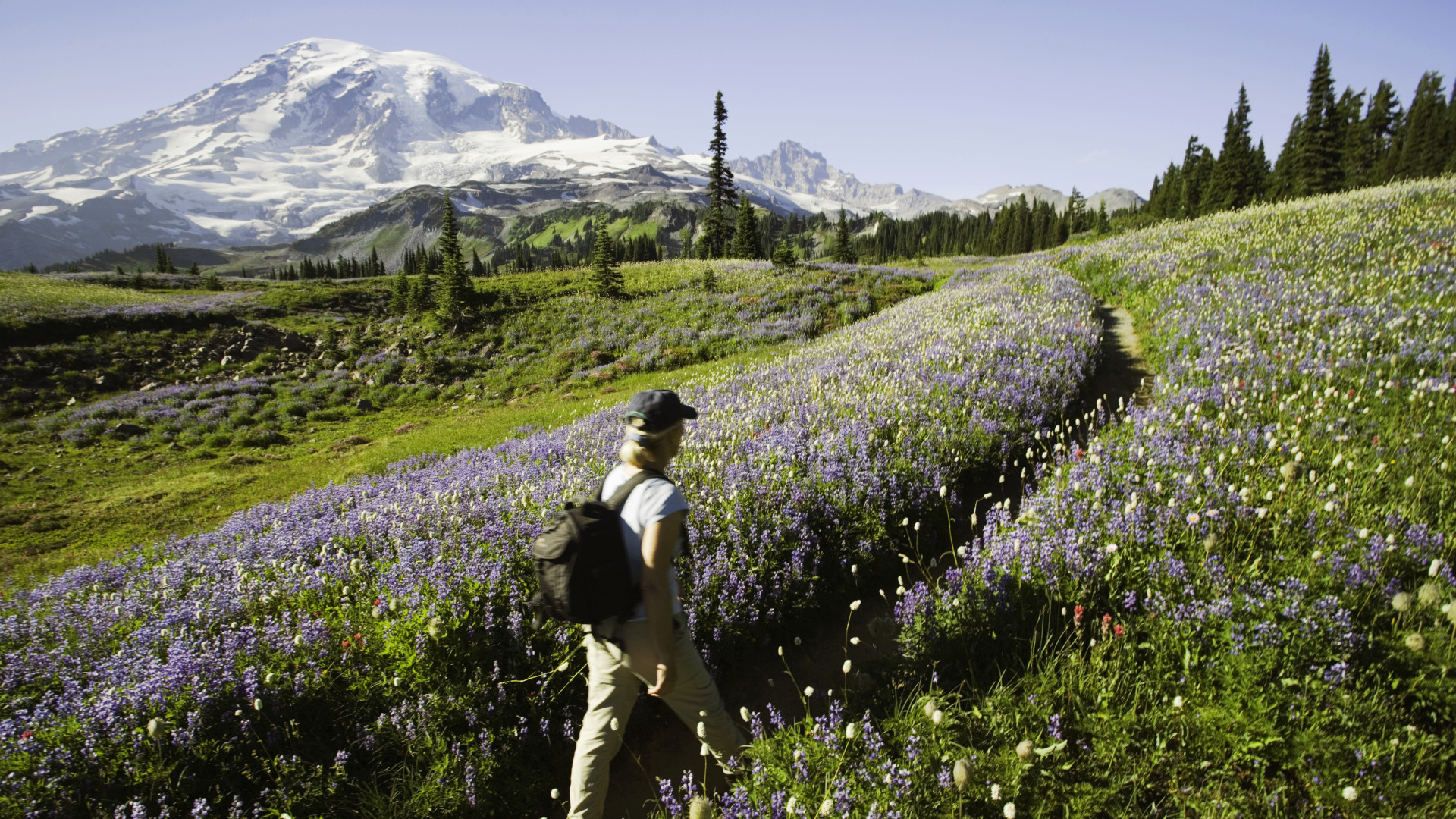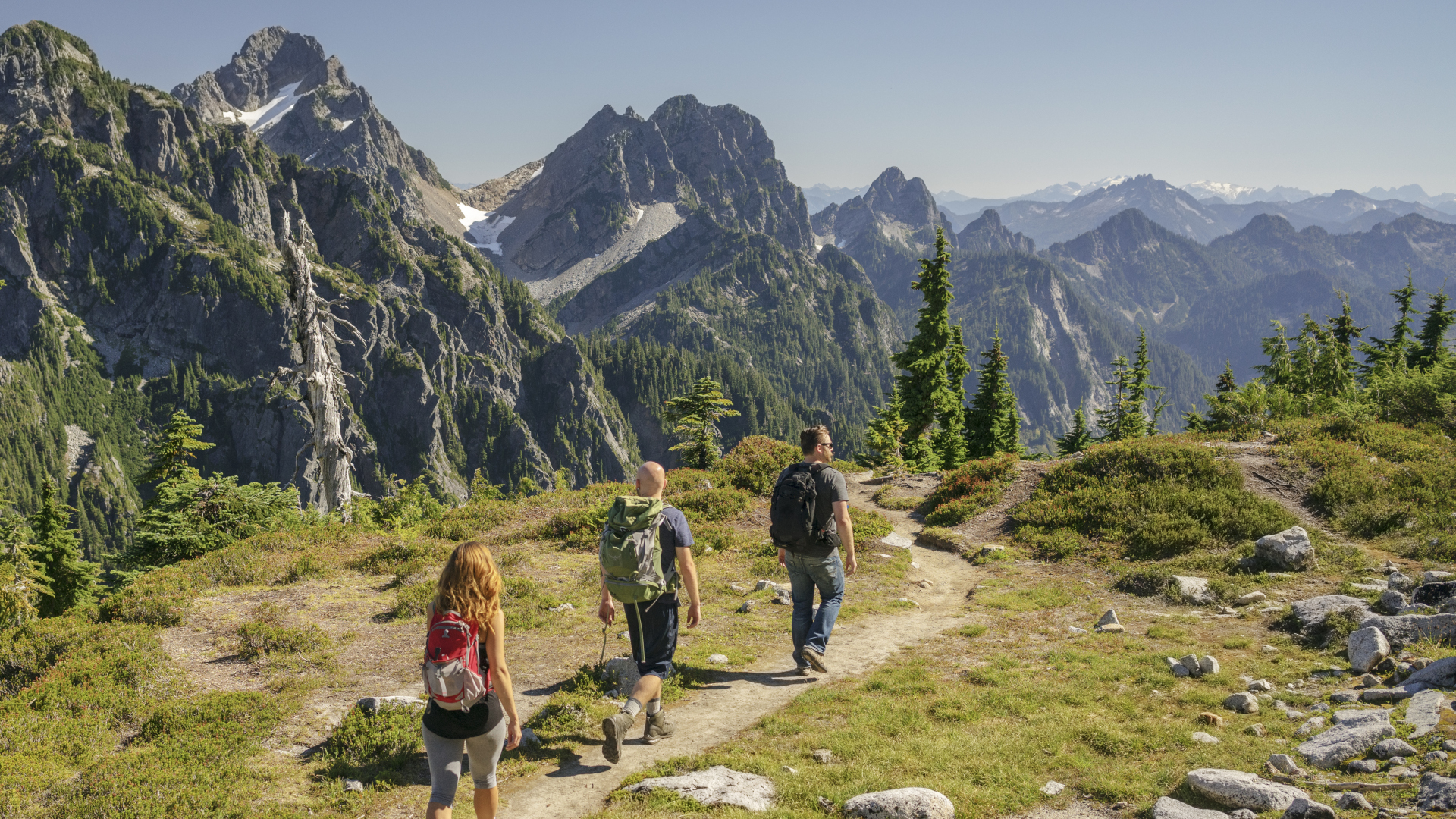A guide to National Parks in Washington and Oregon
A guide to the National Parks in Washington and Oregon and all the reasons you should visit them from cascading falls to active volcanoes and glacier-capped peaks

Curious about the National Parks in Washington and Oregon? Our guide is sure to have you loading up your hiking boots and heading out to the Pacific Northwest for some serious adventure in unparalleled natural beauty. Though these two states cover a lot of ground, they only share four National Parks between them. However as you may already know, the Pacific Northwest makes every inch of land count, and boasts incredible diversity in its ecology.
Whereas Utah National Parks are stunning and unique, they all share a similar red rock desert landscape. But head up to Washington and Oregon and you’ll be dazzled by the contrast of magnificent coastline and glaciated peaks plus the pristine, temperate rainforests of the interior. Across these National Parks, you can explore beaches, glaciers, lakes, rainforests and sleeping volcanoes on foot, boat, bike or belay. Whatever activities you want to do, we always recommend bringing a waterproof jacket since the area receives about seven feet of precipitation each year, but you’ll enjoy the more temperate climate and be able to visit most of the parks here year-round.
Crater Lake National Park, Oregon

Oregon might only have one National Park, but it’s a beauty. Located in southern Oregon near Klamath Falls, Crater Lake is the fifth oldest National Park in the country. As the name suggests, the park centers around a lake which is in a crater that is a remnant of Mount Mazama, a volcano that was destroyed over seven thousand years ago. The lake is truly massive – at 1,949ft deep it is the deepest in the country and the ninth deepest in the world – and its pristine blue waters are a dream come true for boating and fishing.
Other activities here include the 33-mile scenic drive of the Caldera Rim overlooking the lake, several short, woodland walking trails and in the winter, it’s a paradise for Nordic skiing, snowshoeing and sledding.
Mount Rainier National Park, Washington

Just 45 minutes from Seattle, Mount Rainier dominates the surrounding landscape with its hulking 14,410ft of elevation. This active volcano is the most glaciated peak in the country and the source of five major rivers so it’s no doubt the crown jewel of the park. Climbing the mountain itself is a serious endeavor, with over 9,000ft of elevation required over nine miles. However, there are lots of less daunting and terrific trails to be had here, including one of the best hikes near Seattle, Mount Si, which many Rainier-hopefuls use as a training ground.
The park has several distinct sections: Paradise, which is known for its wildflower meadows, Sunrise, which at high elevation offer spectacular views of Rainier, Ohanapecosh and Carbon River which boast old-growth rainforest and Mowich Lake. The park is open year-round with wildflowers blooming in late summer and cross country skiing and snowshoeing come winter.
Olympic National Park, Washington

Few, if any, of America’s National Parks feature as diverse a landscape as Olympic. Just two hours from Seattle, it protects a vast wilderness on the Olympic Peninsula and boasts three distinct ecosystems. There are few roads in the park’s interior and the best way to discover it is in hiking boots. The best hikes in Olympic National Park range from delightful day hikes to extended backpacking adventures and take you from temperate rainforests and rugged beaches to the peaks of glacier-capped mountains.
All the latest inspiration, tips and guides to help you plan your next Advnture!
Olympic National Park is a world heritage site and an International Biosphere Reserve where scientists can study ecosystems that have barely been touched by humans. It has four regions each with a distinct flavor. To the west are temperate old-growth rainforests and to the drier eastern side are pine forests. The Pacific coastline region protects 70 miles of rocky shoreline and the alpine area has high snow-capped peaks offering views of the Olympic interior. The park is open all year and at an elevation of 5,242 feet, Hurricane Ridge is Olympic's alpine destination in winter.
North Cascades National Park, Washington

North Cascades is the furthest Washington National Park from Seattle, but at less than a three-hour drive, that’s not saying much. The Cascade Mountains span British Columbia and Washington and the peaks within North Cascades National Park are crowned by more than 300 glaciers.
This rugged, alpine landscape is home to plummeting waterfalls and green valleys and is almost entirely protected as wilderness so infrastructure and roads are few and far between. Camping here requires hiking in or travelling by horseback or boat but there are many shorter day hikes you can do here too. Access to this park is severely limited during the winter months.
Julia Clarke is a staff writer for Advnture.com and the author of the book Restorative Yoga for Beginners. She loves to explore mountains on foot, bike, skis and belay and then recover on the the yoga mat. Julia graduated with a degree in journalism in 2004 and spent eight years working as a radio presenter in Kansas City, Vermont, Boston and New York City before discovering the joys of the Rocky Mountains. She then detoured west to Colorado and enjoyed 11 years teaching yoga in Vail before returning to her hometown of Glasgow, Scotland in 2020 to focus on family and writing.

